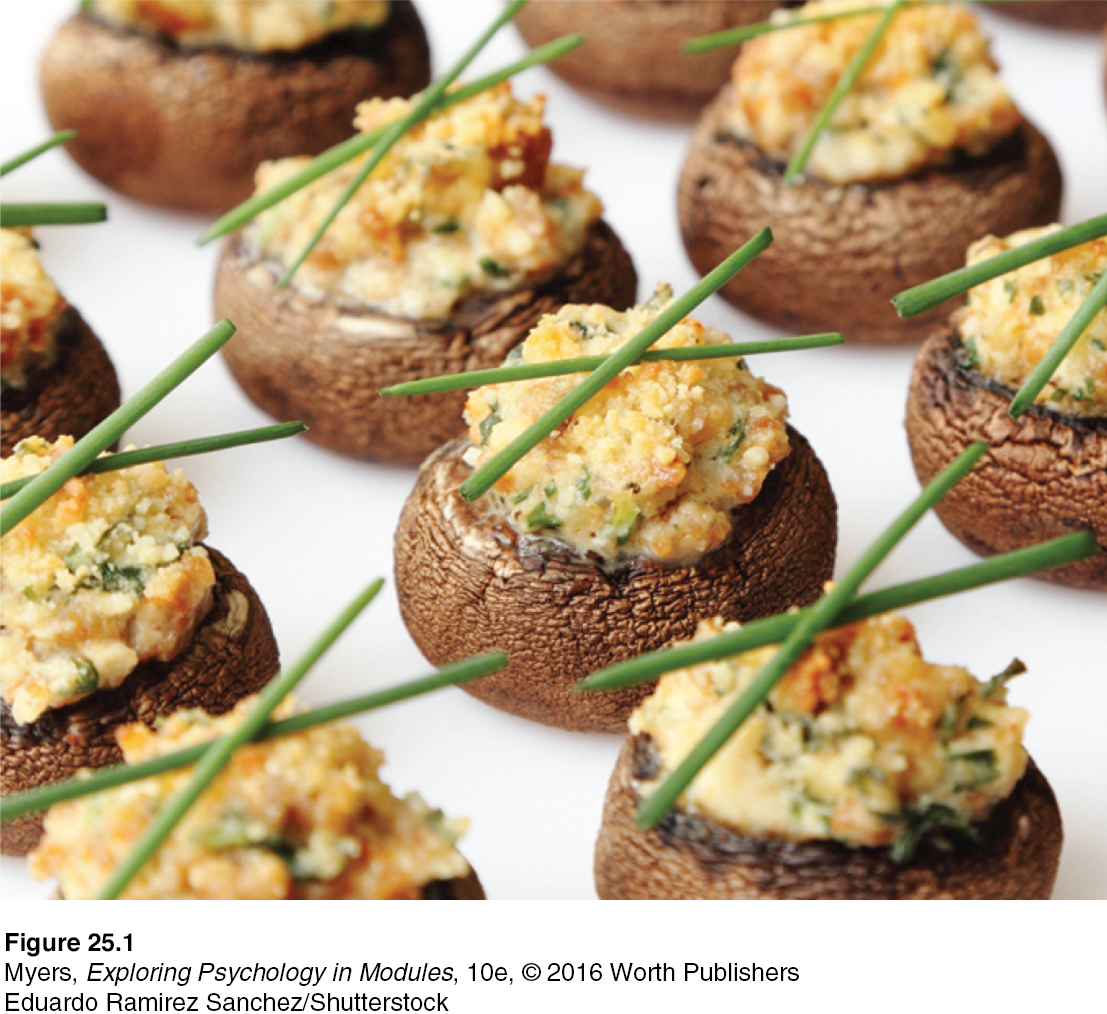25.1 Concepts
25-


cognition all the mental activities associated with thinking, knowing, remembering, and communicating.
concept a mental grouping of similar objects, events, ideas, or people.
Psychologists who study cognition focus on the mental activities associated with thinking, knowing, remembering, and communicating information. One of these activities is forming concepts—mental groupings of similar objects, events, ideas, and people. The concept chair includes many items—
Concepts simplify our thinking. Imagine life without them. We would need a different name for every event, object, and idea. We could not ask a child to “throw the ball” because there would be no concept of throw or ball. Instead of saying, “They were angry,” we would have to describe expressions, intensities, and words. Concepts such as ball and anger give us much information with little cognitive effort.
prototype a mental image or best example of a category. Matching new items to a prototype provides a quick and easy method for sorting items into categories (as when comparing feathered creatures to a prototypical bird, such as a robin).
We often form our concepts by developing a prototype—a mental image or best example of a category (Rosch, 1978). People more quickly agree that “a robin is a bird” than that “a penguin is a bird.” For most of us, the robin is the birdier bird; it more closely resembles our bird prototype. For people in multiethnic Germany, Caucasian Germans are more prototypically German (Kessler et al., 2010). And the more closely something matches our prototype of a concept—
Once we place an item in a category, our memory of it later shifts toward the category prototype, as it did for Belgian students who viewed ethnically blended faces. When viewing a blended face in which 70 percent of the features were Caucasian and 30 percent were Asian, the students categorized the face as Caucasian (FIGURE 25.2). Later, as their memory shifted toward the Caucasian prototype, they were more likely to remember an 80 percent Caucasian face than the 70 percent Caucasian face they had actually seen (Corneille et al., 2004). Likewise, if shown a 70 percent Asian face, they later remembered a more prototypically Asian face. So, too, with gender: People who viewed 70 percent male faces categorized them as male (no surprise there) and then later misremembered them as even more prototypically male (Huart et al., 2005).

Move away from our prototypes, and category boundaries may blur. Is a tomato a fruit? Is a 17-